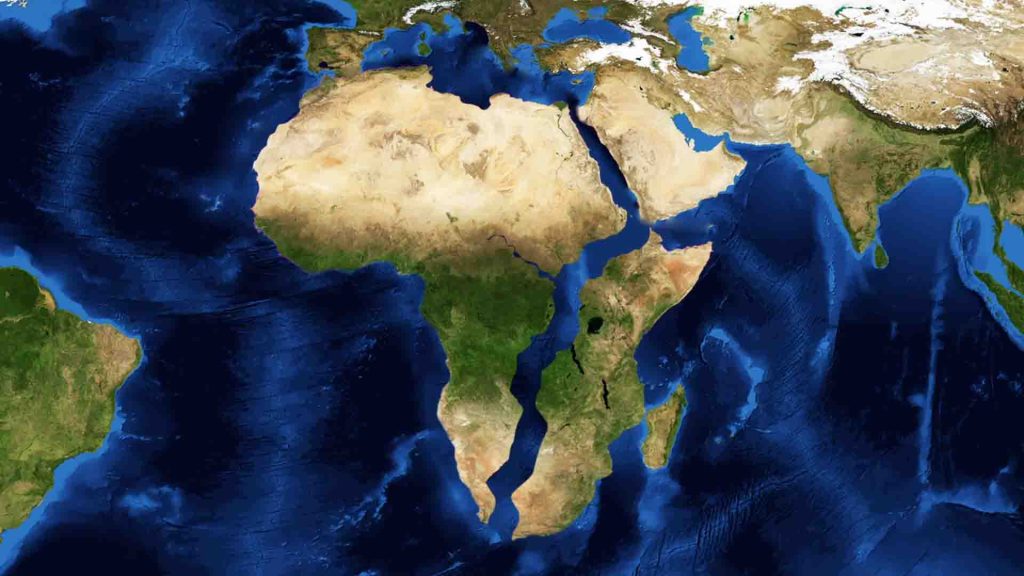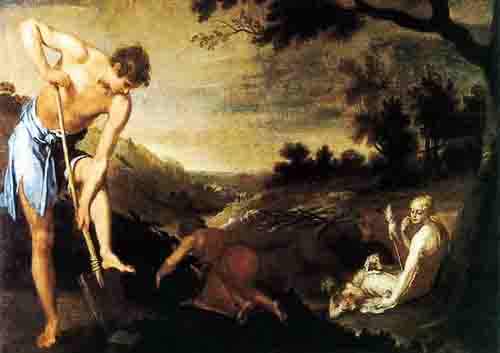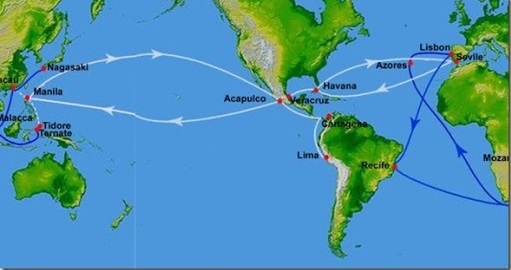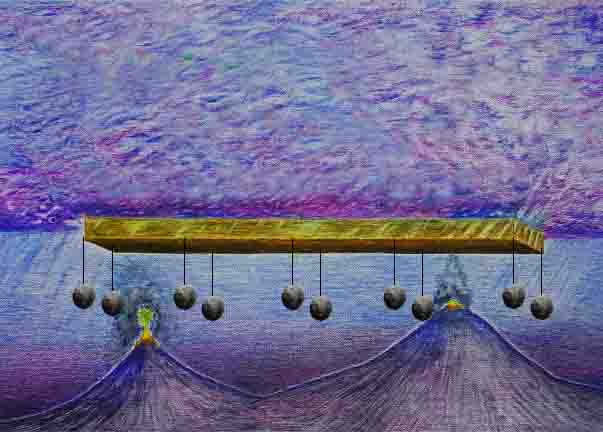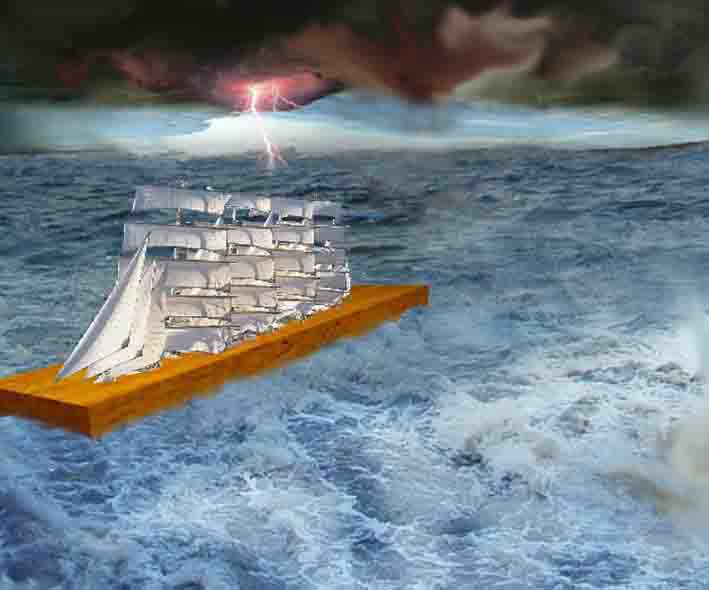52 Weeks in the Ark with Noah and Family (WEEK 27) – Where Did Noah’s Ark Land?
“You whom I have taken from the ends of the earth,
And called from its farthest regions,
And said to you,
‘You are My servant,
I have chosen you and have not cast you away.”
WEEK 27 (27thto 3rdof Cheshvan, the 8th Month, in the Hebrew Religious Calendar)
Before we can answer the question above, we need to know where the Ark was made, in the first place. We often assume Noah lived somewhere in the Middle East and, therefore, also landed there. That is also based on the presumption that the Ark did not (or was intentionally made not to) float far away from where it began its “journey” though the Flood. If you notice, we never used any painting or drawing of the Ark shaped like a sea-going vessel with a streamlined prow and a rounded stern. Often some Ark designs are provided with a rudder, as if it was meant to be navigable. No, on the contrary, it was meant to only float and survive through the whole year it took Noah and his family to remain inside it.
We have crossed the halfway mark into the 52 weeks and now begin the second-half of the journey. By this time, the Ark had landed on the “mountains of Ararat” while the waters continued to gradually “subside”; that is, as the Earth continued to expand into its present size and, in spite of having settled on a mountain, Noah and his family were not allowed to leave the Ark yet. Why? First, of all, the dangers brought about by the apparent expansion remained, such as, volcanic eruptions, earthquakes, rushing waters rushing through rivers and valleys, while mountain-building continued to cause breaking and folding of the Earth’s crust to form new peaks, erosion of huge amounts of rock and soil materials, deposition and sedimentation of rock and soil materials over flood plains, formation of continents and islands, and the resetting of the Earth climatological patterns with the addition of so much water, and the the sudden increase of average global temperature with the disappearance of the Water Canopy that once served as a shield against solar heat and cosmic radiation. We will deal with other reasons in the future.
Drifting Continents or Expanding Earth?
Many geologists would question our assumptions here as it runs counter to the accepted geological and meteorological patterns of an Earth based on a fixed radius from the beginning. Our Expanding-Earth view allows for the catastrophic events that characterized a global upheaval during the Great Flood that we have deduced through the written Revelation and from the actual and the more-logical geologic mechanisms and processes that have continued to act from the past. For example, the spreading of the oceanic floors or basins under the Atlantic Ocean and the Pacific Ocean brings fresh magma from the Earth’s mantle while pushing apart the continents flanking them farther from each other. Hence, Europe and Africa “drift away” from North and South America at the same time that Asia “drifts” away from North and South America. Meaning to say that while the Pacific Ocean and the Atlantic Ocean increase in width from the Northern to the Southern Hemisphere, the continents would appear to “drift” from one another.
Plate Tectonics Theory concludes that an assumed horizontally-oriented geologic mechanism causes the collision of plates, e.g., the Western Pacific Plate against the Philippine Plate, and the Eastern Pacific Plate against the American Continental Plate. This collision supposedly causes crustal folding which leads to the formation of mountains (imagine a flat blanket being pushed from its ends and forming folds like small valleys and hills). The Himalayas is their prime example of this phenomenon through the collision of the Indian Ocean Plate with the Southern Asian Continental Plate. Expanding Earth Theory, on the other hand, does not dismiss any collision of plates; however, that is a minor effect of the Earth expanding (a vertically-oriented mechanism) and actually lifting the entire global crust, both oceanic basins and continental plates, while excess molten materials are being extruded through the mid-oceanic ridge vents as a result of thermonuclear forces acting within the Earth’s core.
The African Rift is a result of the same process of global expansion. In fact, it is a clearly visible proof of a continent breaking apart (increasing in width through expansion) that results into the increase in the diameter of the entire Earth. If oceans and continents are breaking apart in the East-West directions — that is, not sliding past each other (although that could also mean movement in the North-South direction due to expansions as well) – subduction of plates could not be happening but rather expansion. Where do we actually observe subduction at work other than theoretically? Where do we see new mountains being formed through such a process? Yes, the mountains could be increasing in height; but it could be less due to plate collisions and more due to expansion.
We present this simplified process of Earth’s expansion to show that the Ark could have been built on a broad, flat terrain where water and vegetation were plenty for Noah and his family to easily access during the construction period. Otherwise, how hard it would have been for them to cut trees and build the Ark upon a hill. If it rained and flooded the whole Earth, it would not have made any difference for them. Yet, they landed on “the mountains”. That is certainly very telling. If the Earth was relatively flat in the beginning, as we surmised, the story somehow suggests that after 214 days, when the Ark landed, the probability of landing on a generally-flat Earth had become much less. Perhaps, we can say Yah intended for the Ark to land on a mountain; but for what reason or purpose? The only reason and purpose is the fact that the Earth’s configuration changed during the Flood and that Yah was showing Noah (and us) that the New Earth and New Heaven was totally different from the Old Earth and Old Heaven. And it really was and is. Why else bring a Global Flood if only to kill wicked beings and nothing else? No, we have shown the many reasons and purposes why the Creator rebuilt the Earth during Noah’s days. And for the same reasons and purposes, He will rebuild the Earth after these present “Noah’s Day Part 2”.
Where Noah Built the Ark
So, where did Noah build the Ark? He built it where he and his family had lived all their lives – in the land where their (and our) first parents had also dwelt since the beginning of Time. There is neither any evidence nor any compelling reason for Adam and Havah to have left and travelled far from the place “eastward IN Eden”. (Gen 2:8) But where is Eden? Or the better question we must settle first is what is Eden? Eden is the birthplace of humans, which Elohim had created and prepared for humans to live in abundance. There Elohim planted a garden on the 3rd Day of Creation; and brought out land animals on the 6th Day. We know the story. From Eden flowed four rivers that “watered the garden of Eden”. We must remember that “Eden” means “garden” – the home of Adam and Havah. Like the whole of Creation, Eden was a perfectly-designed territory, not an accidental place, where children of Yah could become caring, disciplined and moral beings. Dominion must become synonymous to stewardship, not to exploitation and colonialism. The latter are of the devil. The fallen angels set the abominable examples to humans early on in primeval history. We know that those who still practice these deeds serve Satan.
Just as we must seek to recover our rightful place in Eden, as children of Adam and Havah, we must also regain the knowledge of its exact location on Earth. We are lost, literally and figuratively, because our parents were driven from the Garden. The first step in going back home is to know where it is; and then, we can start walking in the right direction. The rulers of this world decided to keep the right knowledge from those who have sought to return to Eden, not just the location but also the proper steps to be taken to be worthy to return to Paradise. Yahusha led the way back through His death and sacrifice. Yes, He brought along a redeemed sinner — a thief – to prove His Word and His Authority at the cross and by death on the cross. Noah lived in that land where Adam was “begotten” by the Father. And he bequeathed the same land he had lived in to Shem, his first-begotten son. Hence, while Yahusha went to the “forbidden and hidden” Paradise where the faithful departed have gone, Noah dwelt and died in the land where Adam and Havah were driven into just outside of the Garden. Yet, that land had to be “forbidden and hidden” again by wicked rulers who wanted to grab the wealth of the land that `Noah’s descendants had possessed and enjoyed for millennia. to do so, They had to raise armies and navies to search for it and secure it for themselves. To this day, the onslaught has not ceased nor diminished.
The prophets and apostles knew where Adam and Noah dwelt. At one time, humans spoke one language and dwelt near the fertile lands that Adam and his children and grandchildren had cultivated and nurtured for generations. After the Flood, when humans once more rebelled at Babel, they were scattered all over the face of the Earth. It was another form of a global flood. Civilizations of different languages and cultures grew and spread, awaiting the time when the Promised Seed would arrive. By the time He arrived, the location of Eden had long been forgotten by majority of people, except by those who read and understood Revelation. David and Solomon had known all along where Havilah, Sheba and Ophir dwelt for that is where their navies sailed to get the “good gold” they needed for the Temple in Yerushalem. Even the rest of the nations, from the Egyptians, Phoenicians, Greeks, Indians, Chinese, Japanese to the Europeans, knew where Chryse, the Land of Gold, was. In fact, it was that lost or hidden knowledge that led to the birth of Age of Exploration. The navies of the world began searching for El Dorado, the gold of Ophir and the silver of Tarshish, and the wealthy land of the Queen of Sheba. We know the history of Columbus and Magellan, and the 300-year gold trade through the Manila-Acapulco Galleon route. But the conquerors deceive many by talking only of spices, tobacco, palm oil and opium. (Follow the arrows below and you will see where the wealth flowed into for centuries, that is, in the opulent Western cities which world tourists visit to be enthralled. Yes, even by the desolate ruins of ghastly wars, the magnificent tombs of wicked rulers and the resplendent temples of pagan gods and goddesses.
Knowing where the descendants of Shem lived and how the world came to know about the gold of Ophir brings us to where Adam, Noah, Shem, Arphaxad, Peleg, Yoktan and his children and grandchildren lived. Follow the trail of the gold and you will find the footsteps of all of these personalities leading to the “Land just outside the garden of Eden — Perdido Eden”. Perhaps, Eden is close by that place, somewhere above or below. While it is indeed hidden and forbidden from human sight, the stories about it are no longer hidden and forbidden. However, even the people who live there still do not realize the truth that stares them in their faces. The truth has been totally erased from their national memory that even the words of the prophets could no longer convince them to even consider it. Like the nations that had spread all over the Earth which had forgotten their link to their Father Adam and Mother Havah, the dwellers of “Fallen Eden” themselves do not know the real history of their Yah-given territory. We know where Ophir is today. Although we now call it by a despicable name given by the colonizers, it will forever remain as Ophir, Havilah, Sheba and Tarshish, as the prophets had always called it. It is written in the golden tablets of the angels in Heaven, as well as in the Revealed Word of Ruach.
Where Did Noah Land?
Noah lived to be 950, that is 349 years more after the Flood, and long enough to have seen all those grandchildren he had through his son Shem. Meaning to say, he dwelt with the people who later possessed the choicest inheritance he bestowed and must have imparted to them valuable knowledge and real history of the birthplace of humans and, more so, how it had lost its purity and beauty. Yet, Noah must have taken pride in having been tasked to renew the land of Eden for Yah and for the sake of humanity. What a great man and worker Noah was to have been given such honor and privilege to serve the Creator in the various roles he had assumed. Yet, in spite of his greatness and accomplishments, he has not been given ample recognition and credence in regards to his adherence to spiritual, physical, biological, agricultural and medical principles he had learned and passed on to modern humans. His connection to Enoch, whose book has been labeled as “hidden” or “uninspired”, kept him (as well as Enoch) under the shadow of doubt and incredibility, in spite of Moses’ own testimony to his works.
This is where we depart from the accepted narrative of most scholars and historians as to where Noah’s Ark landed. The scriptures mentions the “mountains of Ararat” as the place where it landed. But if the Ark was not navigable and was not meant to be navigated but to simply float, how then did it float from the Far East to Turkey – a distance of 8,800 kilometers? Which would mean, on the average, the Ark floated at 8,800 kms/year or 8,800 kms/8,760 hours, that is, almost exactly 1 km/hour. 1 kilometer per hour! A person can walk roughly 5 kilometers per hour. So, the Ark moved at the pace of a cat or a young child, assuming it travelled in a straight line. For it could have travelled faster but went about in a circuitous way. But did it? Most probably not.
Why the Ark was a Box
If you were Noah and you wanted to make sure you would remain hovering above the land where you and your forefathers had dwelt, what would you do? You could tie the Ark to huge boulders as heavy anchors to keep it in place. But how would he have known how high the waters would rise? Remember, the land was flat and there were no surrounding high hills, as assumed. So, even if he had hypothesized that the waters reached to 3 kilometers deep, the expansion of the Earth would have allowed the Ark to still hover with great boulders that served to anchor him and remain immovable (through its inertia at rest, as aided by the counterweights). Anytime the waters subsided, the weights would have kept them anchored as waters rushed down on the slopes of the mountains. Besides, from the accounts of Noah, the descent of the water level seemed to be gradual. This plausible scenario would have negated the possibility of the Ark floating far from where it had risen up at the start. The Ark had hardly any substantially-exposed profile which would have served to produce wind drag and cause it to be buffeted by winds and be driven like a floating stick. On the contrary, because of its shape and massive bulk, it would have just stayed in place like a stranded, giant flat-barge laden with rocks bobbling like a buoy in the ocean.
Furthermore, it would have required so much energy to push the Ark at the speed of 1 km/hr for one year. And since there was apparently no wind blowing until Yah caused it to blow and cause the Flood to subside, it would mean that it must have taken the Ark much less than one year or within 214 days or 7 months (or even less) to travel 8,800 kms before it settled down. (Gen. 8:1-5) That would more than double the speed we computed earlier, requiring much more power to do so. The Ark would have to have many gigantic sails to navigate such a distance. Perhaps, it did with the help of angels; but we have to conclude that such a source of energy to move the gigantic Ark over such a long distance would have been improbable to exist.

Where Exactly in “Fallen Eden” (Perdido Eden) Did the Ark Land?
There is only one place in Ophir that has a mountain with the name Arayat. Natives during the early times used to call it Bondo Alaya (Mount Alaya), as recorded in 1696 by Gemelli Careri. It eventually became Arayat. (Wikipedia) The word alaya, however, has Hebrew origins and means “ascender”; in Arabic it means “high exalted one”. In Kapampangan (the dialect of Pampanga province where Mt. Arayat is found), alaya can mean either “dawn” or “east” (related to the Ilocano daya), which could make the word refer to Mt. Arayat as the “mount of the East” or Sephar which is where Shem’s children lived!
“Yoktan begot Almodad, Sheleph, Hazarmaveth, Yerah, Hadoram, Uzal, Diklah, Obal, Abimael, Sheba, Ophir, Havilah, and Yobab. All these were the sons of Yoktan. And their dwelling place was from Mesha as you go toward Sephar, the mountain of the east. These were the sons of Shem, according to their families, according to their languages, in their lands, according to their nations.
– (Gen. 10:26-31)
Why would Moses specifically mention Sephar right after the Flood as the dwelling place of some of Shem’s descendants unless it was not where Shem received his inheritance from Noah during the division of the world according to the families and nations that directly came from Noah’s lineage? Could Mt. Alaya or Arayat, which rises out to the sky in the middle of the vast Central Plains of Luzon like an anomalous geologic feature, have been in the general area where the Ark had been built by Noah and his family and where it also landed after the mountain “ascended” or arose from the plains, thus, becoming the “high, exalted one or high place” in the East where the “high exalted” Father Noah, savior of the Earth, landed and dwelt before and after the Flood?
Sephar comes from the Hebrew word seper, meaning “record, writing or census”. Could it be that the account of Moses in Gen. 10 itself serves as the written record from Noah when he divided the Earth as inheritance to his 3 sons? And that he remained and lived on Mt. Alaya or Mt. Arayat until he was ready to bequeath the Earth to his children and his grandchildren? If we look at the chart below, Noah lived way past the time of many of his grandchildren, including Peleg, during whose time the division was made. Noah even lived to see Abram born and become mature! Now, that is an amazing Revelation, we have missed all this time! We can now understand why and how Abraham rediscovered the ancient Hebrew language and the pure worship of his forefathers. Most certainly, Noah lived to see and pass on to Eber, the father of Yoktan and grandfather of Ophir, Havilah, Sheba and Yobab, the teachings and writings of Enoch. In short, during the time Noah divided the world to his children, he was surrounded and graced by the presence of his progeny in-the-flesh. What other prophet, father and grandfather could have received such abundant blessing and honor from Yah in a renewed world he helped to rebuild and to prepare for us all today?

The records of Noah exist, straight from Sephar, the mountain of the East, where he landed and dwelt till his death. Yet, not a document written by the ancient dwellers of Luzon remains that can authenticate this finding which other researchers have also shown to be valid and foretold in the writings of the prophets. (Kindly check the closely-similar findings of God Culture on this matter.) In fact, not a single document written by the natives of the archipelago in their ancient Baybayin script has been published, except for documents written by the Spanish clergy that propagate Catholic catechism. Why? If they had a language and an alphabet, how come not one minor or major literary or historical document has been preserved and passed on to us today? Except for the evidences we can find in scriptures, we cannot vet our conclusions; however, the biblical testimonies and, ironically, the historical proofs provided by the colonizers themselves suffice to allow us to conclude with confidence that Ophir is where the Garden of Eden is located and is also the land where Noah and his descendants dwelt before and after the Flood. Whether we call it Ophir, Havilah, Sheba or Tarshish (for the sons of Yoktan had over 7,000 islands from which to choose from), there is no question that these islands at the “ends of the Earth” played a crucial role in the Eternal Plan of Yah. (Isa. 41:1-10) Moreover, it will play an even more important role in “Noahs’ Days Part 2”.
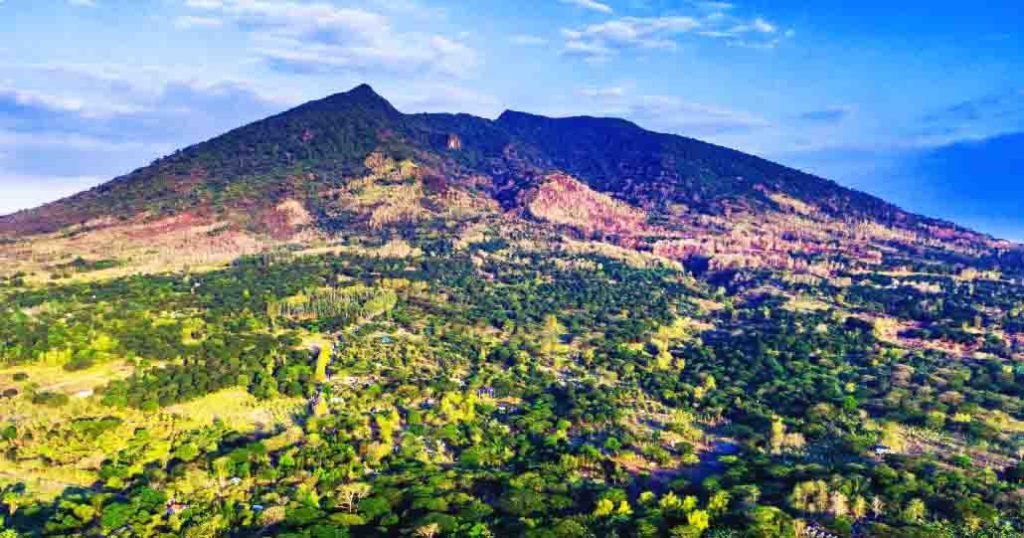
But the Text Says “Mountains”
Why did Moses write “mountains of Ararat”, if Mt. Arayat is only one mountain? Arayat actually has 3 peaks, all of them about 1,000 meters high. The Hebrew word used for “mountains” (hare) is the plural of har, meaning “hill, hill country or mountain”. A quick look at the profile of Arayat shows its general topography. Today, we call a mountain by one name; but it may have so many peaks of hills. Thus, a mountain can be a “hill country” or “hill territory”. The Ark is definitely much smaller than Mt. Arayat and it could have landed in the midst of its mountain peaks. Note that when the Ark landed among the peaks of the mountain, the Earth was practically barren. Yes, there may have been stumps of trees or even whole trees that may have survived being submerged in a year; but they would have been worthless for months or years. Much of the vegetation would either have been covered by thick mud or sediments thousands of meters high. (Except for that one olive tree that sprang a leaf after a few weeks being out of the waters.) It would have taken months or years for living organisms within the muck or sediments to once again spring fully into life. Meanwhile, there would not be a living creature or a plant that could feed a hungry mouth. Practically all that Noah brought in the Ark was all that could feed and replenish the Earth. The legend of the goddess Mariang Sinukuan seems to provide an allegorical retelling of Noah’s blessed descent upon Mt. Arayat. For through his presence, the seeds and animals they brought in the Ark soon revived the mountain and the whole land.

Read the story of Mt. Sinukuan (literally, “mountain of surrender or submission”) or Mt. Arayat and see how the anger of the Creator falls upon those who would abuse His goodness and abundance through self-importance and greed. (Legend of Mariang Sinukuan) The judgment of Yah once obliterated Creation upon the face of the Earth. But by the mercy of the Creator, humans once more had the chance to renew their covenant with Him through obedience and submission. For it was on that mountain that Noah and his family had also submitted their lives to the plan of the Creator to rebuild and to replenish a New Earth and a New Heaven under His Eternal Rule of Righteousness. Yet, as the legend proves, humans will always fall short of divine expectations. And for over 2 millennia, Yah would hide from humans (as Mariang Sinukuan also hid from the people) until the time when He sent His Son. Today, another 2 millennia has passed and we still await His return to finish the work of redeeming the Earth and humans from total and ultimate destruction. As children of Noah, we have inherited his work of rebuilding this fallen world before the return of the King and Savior, Yahusha Masshiak.
Until we learn to submit our entire life to the Creator, we can never attain the blessings that once poured into the lives of our ancient fathers Adam and Noah, chosen pioneers of Creation. We stand at the crossroads of an Old Earth that Noah once rebuilt and the New Eternal Earth that Yahusha is building and will soon reveal upon His return. His word is true and certain, as we have seen in the life of Noah. Will it be true and certain in our life today?
In the next chapter, we will provide more solid evidences to strengthen our conclusion that Ophir is the Land of Eden and the Land of Noah and his descendants.


